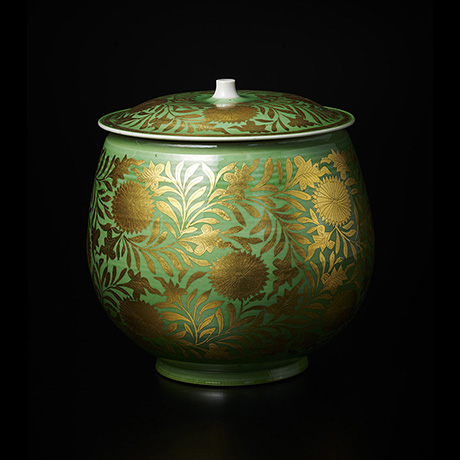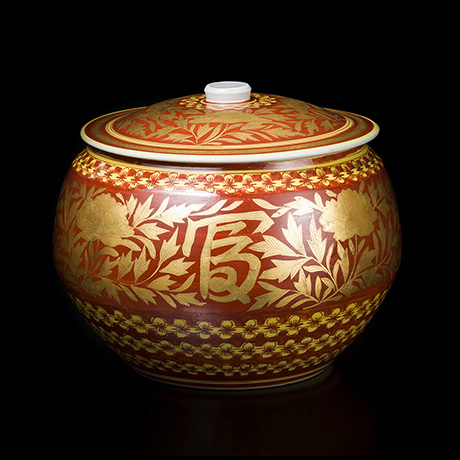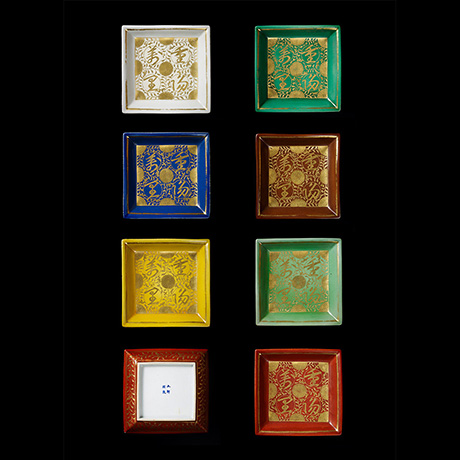-
箱
Box -
共箱
with box signed by the artist -
サイズ
Size - 19.5/H19.8cm
中国嘉靖年間の萌葱金襴手の小さな碗を手かがりに土師萌先生は最も困難とされているこの技法を完成させた。萌葱は銅を呈色剤としているために少しのことで発色が良くなくなる。特に金泥で描いたものでなく薄い金箔を漆で貼り焼き付けることが必要なために、より慎重に行わなければならない。この作品は器形も素晴らしく、菊唐草を全体に配した豪華絢爛な作品で土師萌先生を代表する名作である。
1999年東京国立近代美術館『近代陶芸の精華 加藤土師萌展』出展作品
朝日新聞社「加藤土師萌作品集」所載作品
Mr. Hajime reproduced and perfected the technique called “Moegi-kin’rande,” using overglaze spring green enamel and gold, which was considered to be the most difficult technique produced in Chia-ching (嘉靖) period of the Ming Dynasty, 1522 – 1566.
With the help of a small bowl of the period, he found the yellowish green is made with copper as a coloring agent, so the slightest matter will cause the color to fade. In particular, compared to using gold paint, it needs to be more careful to use thin gold leaf applied with lacquer, and then burn on to. The shape of this vessel is excellent, and the chrysanthemum arabesques placed all over the work make the work a gorgeous. This is the masterpiece of the artist.
Listed on “the exhibition of KATO Hajime, the glory of modern pottery” at National Museum of Modern Art, Tokyo,1999
Listed on “ The works of KATO Hajime” published by The Asahi Shimbun Company.



